Kirby Larson's Blog, page 18
March 27, 2014
From the Office of the Future of Reading
Please join me in welcoming today's guest blogger, Sashi Kaufman. Sashi is a middle school English and science teacher who lives in Portland, Maine with her husband and daughter. She teaches science and English (not math) because she is curious about the world and not so much in quantifying it. Her life-long passion for reading led her to try her hand at writing for young adults. Her debut YA novel The Other Way Around hit the shelves on March 1st (she was my Friend Friday guest on March 14!). She is also an amateur trash picker.
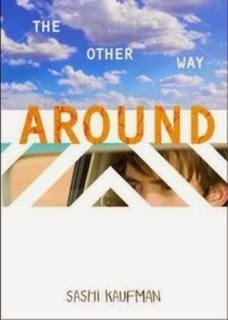
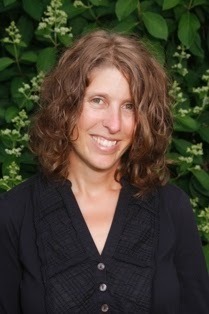
Calling literature circles “Book Clubs” is a bit like calling gym class enforced aerobic exercise. They’re basically the same thing. But while my eighth grade students will moan and groan at being asked to participate in literature circles (and pretty much everything), they are more likely to give Book Clubs a chance. Why? Book Clubs are clubs, and it’s fun to belong to a club. Maybe I’m taking advantage of the insecurity and desire to belong that seem to go hand in hand with adolescence but there are worse things I could do than use it to get them to read. By the time most students have reached eighth grade chances are they’ve been asked to participate in a literature circle. They’ve gone through the traditional roles: discussion director, artful illustrator, etc. I’ve done traditional book clubs in this way but found that while students might spend a lot of time researching a vocabulary word or creating the perfect picture of the annex in The Giver, they missed out on the most important part of a literature circle: talking about the book.It’s not easy to get students of any age to have an informal but substantive discussion about any book. I spend quite a bit of time pre-teaching how to ask good questions about books. I use the levels of questioning provided by the Keys to Literacy program. And I work with students to create questions which fall into the applying, analyzing, evaluating and creating categories. When they bring these types of questions to their book clubs, better quality discussion is always bound to ensue. I focus the book club meetings on sharing and responding to these questions.
Because I teach in Maine where all middle schools have one-to-one technology, I can use wikis and Google docs/forms to facilitate the gathering of information. This does make a big difference in the way they can share their ideas with each other and with me. Each group takes notes in a shared Google doc which they also share with me.
Other things which help Book Clubs succeed where traditional literature circles may not:
Accountability –students rate each other on level of participation prior to book club and during book club. Choice – students choose which books are most interesting to them (from 4-7 choices) and I’m always able to give everyone their first or second choice. And finally, and perhaps most importantly, food. Never to be over-looked, food is a huge part of any book club I’ve ever participated in. It works that way for kids too. Students take turns bringing in the book club snacks. I’ve seen groups take pride in providing the “best” snacks for their members. Food keeps things casual and fun, and it’s an additional way that they look forward to book club. Hopefully this creates positive associations that will keep them reading and talking about reading for life!
Thank you Sashi for sharing such specific and helpful tips for creating successful book clubs!
Published on March 27, 2014 05:00
March 26, 2014
Wednesday Wisdom
My first acting teacher said all art is one thing: a stimulating point of departure.
Jack Nicholson
Jack Nicholson
Published on March 26, 2014 05:30
March 25, 2014
From the Office of the Future of Reading
Please join me in welcoming today's guest blogger, Shannon Clark:
Wife to 1 husbandMother of 3 childrenOwner of 7 dogs, many horses, cows, and donkeys6th grade teacher, B.A. in criminal justice, Master’s in childhood education, ED.S. in elementary education, ponders quite often about becoming a NBCTAlabama country girl who loves to drive a tractorLover of running, reading, teachingShannon blogs here
 Shannon Clark
Shannon Clark
Passionate About Reading
Passion can be love or hate because it’s any powerful feeling you have about something. The dictionary defines it as:pas·sion [pash-uh
 n]noun1.any powerful or compelling emotion or feeling, as love or hate.2.strong amorous feeling or desire; love; ardor.http://dictionary.reference.com/browse/passion
n]noun1.any powerful or compelling emotion or feeling, as love or hate.2.strong amorous feeling or desire; love; ardor.http://dictionary.reference.com/browse/passion
Most of us are passionate about something: God, family, animals, eating, exercising, sports, television, reading, shopping….
One of my passions is reading. It always has been. Sure I’ve had lulls in my reading life, especially during my teen years, but it’s always resurfaced. Passion doesn’t die; in some cases, it just becomes dormant until a spark reignites it.
I became a reader at the ripe age of FOUR. See, on Sunday afternoons after church a quiet peace would settle in our house as everyone read something. A book. A newspaper. Whatever. Since I couldn’t read, I’ve been told that I would whine, fuss, complain, and cry that IT JUST WASN’T FAIR. WHY DOES EVERYONE ELSE GET TO READ AND I CAN’T???????? These little tantrums worked. I was enrolled by my mom, an avid reader, in kindergarten a whole year early. Insert smile and happy dance here!!!
So for 2 years, I attended kindergarten and learned to read. Dick and Jane were 2 of my closest childhood friends. And I’ve had many, many, many book friends since then.
As a teacher of readers, I want my students to see me as a reader. I want them to see my passion for reading. So what do I do to make my passion for reading visible? I talk the talk and walk the walk. At the beginning of the year, I challenge all of them to read more books than me for the school year. I like to throw that in there! The first few days of reading workshop I read while they read. I bring my current book to school. I talk about my love of books. I talk about the books I’ve loved. I talk about my relationship with my book characters. During our daily read aloud, I let them see my connection to these characters in the way I read, the way I laugh, and sometimes the way I cry. I ask them what they are reading. I ask them how they like what they are reading. I ask them about their reading.
This year I even tried something new- My Book Door. How much more visible could I get?
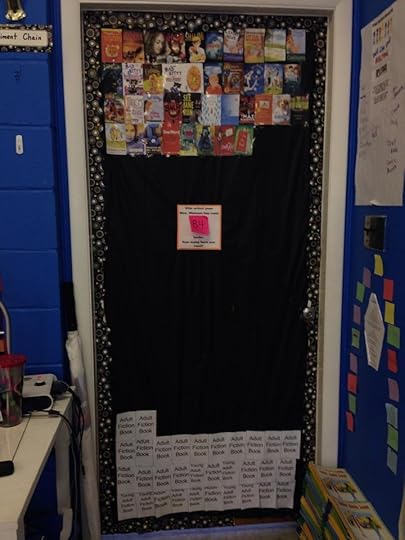
My students can see at a glance WHAT I’ve read and HOW MUCH I’ve read. And how much more I’ve read than them. Wink-wink!
I only hope that this passion I have for reading has some kind of influence on the readers in my classroom: the avid readers, the reluctant readers, the non-readers. If my reading passion touches them in any positive way, then I will feel successful as a teacher of these very young and oh, so impressionable readers.
By the way, WHAT ARE YOU READING?
Thank you Shannon for your passion for reading and for spreading it around! And in answer to your question, I am reading the latest installment in Tom Angleberger's Origami Yoda series, Princess Label Maker to the Rescue!
Wife to 1 husbandMother of 3 childrenOwner of 7 dogs, many horses, cows, and donkeys6th grade teacher, B.A. in criminal justice, Master’s in childhood education, ED.S. in elementary education, ponders quite often about becoming a NBCTAlabama country girl who loves to drive a tractorLover of running, reading, teachingShannon blogs here
 Shannon Clark
Shannon ClarkPassionate About Reading
Passion can be love or hate because it’s any powerful feeling you have about something. The dictionary defines it as:pas·sion [pash-uh

 n]noun1.any powerful or compelling emotion or feeling, as love or hate.2.strong amorous feeling or desire; love; ardor.http://dictionary.reference.com/browse/passion
n]noun1.any powerful or compelling emotion or feeling, as love or hate.2.strong amorous feeling or desire; love; ardor.http://dictionary.reference.com/browse/passion
Most of us are passionate about something: God, family, animals, eating, exercising, sports, television, reading, shopping….
One of my passions is reading. It always has been. Sure I’ve had lulls in my reading life, especially during my teen years, but it’s always resurfaced. Passion doesn’t die; in some cases, it just becomes dormant until a spark reignites it.
I became a reader at the ripe age of FOUR. See, on Sunday afternoons after church a quiet peace would settle in our house as everyone read something. A book. A newspaper. Whatever. Since I couldn’t read, I’ve been told that I would whine, fuss, complain, and cry that IT JUST WASN’T FAIR. WHY DOES EVERYONE ELSE GET TO READ AND I CAN’T???????? These little tantrums worked. I was enrolled by my mom, an avid reader, in kindergarten a whole year early. Insert smile and happy dance here!!!
So for 2 years, I attended kindergarten and learned to read. Dick and Jane were 2 of my closest childhood friends. And I’ve had many, many, many book friends since then.
As a teacher of readers, I want my students to see me as a reader. I want them to see my passion for reading. So what do I do to make my passion for reading visible? I talk the talk and walk the walk. At the beginning of the year, I challenge all of them to read more books than me for the school year. I like to throw that in there! The first few days of reading workshop I read while they read. I bring my current book to school. I talk about my love of books. I talk about the books I’ve loved. I talk about my relationship with my book characters. During our daily read aloud, I let them see my connection to these characters in the way I read, the way I laugh, and sometimes the way I cry. I ask them what they are reading. I ask them how they like what they are reading. I ask them about their reading.
This year I even tried something new- My Book Door. How much more visible could I get?

My students can see at a glance WHAT I’ve read and HOW MUCH I’ve read. And how much more I’ve read than them. Wink-wink!
I only hope that this passion I have for reading has some kind of influence on the readers in my classroom: the avid readers, the reluctant readers, the non-readers. If my reading passion touches them in any positive way, then I will feel successful as a teacher of these very young and oh, so impressionable readers.
By the way, WHAT ARE YOU READING?
Thank you Shannon for your passion for reading and for spreading it around! And in answer to your question, I am reading the latest installment in Tom Angleberger's Origami Yoda series, Princess Label Maker to the Rescue!
Published on March 25, 2014 05:30
March 21, 2014
Friend Friday
I am thrilled to host Laura Purdie Salas today. I first "met" Laura through her lovely book, A Leaf Can Be, but then I got to sit right next to her at the Golden Kite Luncheon this past August where that beautiful book received a Golden Kite honor award. I think you will get a tiny picture of her big heart when you learn that she is donating a portion of her author royalties for her newest book, Water Can Be, to WaterAid, a global water charity.
 Laura Purdie SalasI know some writers set out to write books that change the world. I never hold aspirations quite that grand, but my books usually at least change me in some way.
Laura Purdie SalasI know some writers set out to write books that change the world. I never hold aspirations quite that grand, but my books usually at least change me in some way.
Water Can Be...started as A River Can Be.... That's what I submitted to Millbrook Editorial Director Carol Hinz, who edited A Leaf Can Be . . . I loved how Leaf had turned out, and I thought, "Cool! Let's do that again!" So, I wrote A River Can Be..., and I liked it. I mean, rivers are cool. They do everything: carve out canyons, produce electricity, form borders, and--well, like a Swiss Army Knife, a good river can do just about anything. What's not to love?
But Carol declined the manuscript, pointing out that it lacked the universality of A Leaf Can Be. . ., because not all kids have access to a river. That threw me. I've lived my life in Florida and Minnesota, two states where a river is almost always within splashing distance. Laura head over heels at the go ahead to rewrite A River Can BeSo I proposed broadening the scope to all kinds of water, not just rivers. She said yes, and I got to work. As I brainstormed, a million memories surfaced:
Laura head over heels at the go ahead to rewrite A River Can BeSo I proposed broadening the scope to all kinds of water, not just rivers. She said yes, and I got to work. As I brainstormed, a million memories surfaced:
· Me, age 4, riding a Colorado ski lift with my dad. At the top, he stood and skied off. I didn't. They had to circle the chair around, and I faced down an enormous snow-covered mountain. Ack!
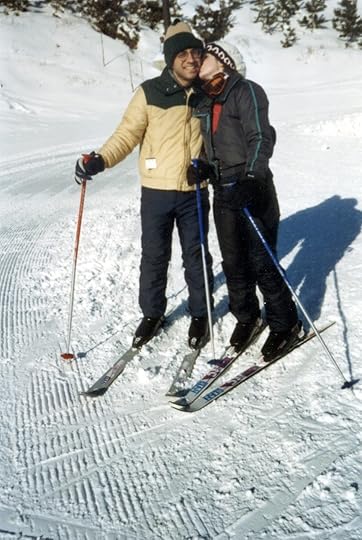
· Swimming in Blue Spring in Florida, watching manatees play where the spring water joins the warm, alligator- and boat-filled St. Johns River.
· Diving off the high dive at the Langford Pool for the first time.
· Canoeing on Lake Sylvan, two blocks from my childhood home, keeping eyes peeled for alligators. (Shudder.)
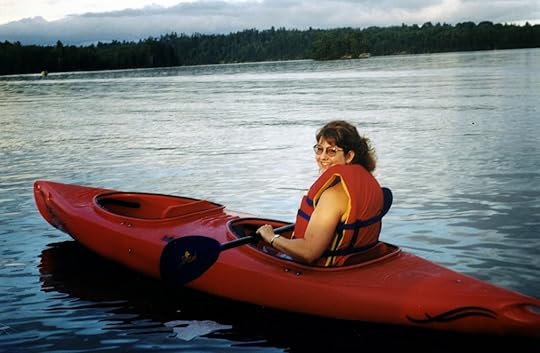
· Ice skating (in Florida!) on my first date with my husband, Randy.
· Cross-country skiing at night through the woods, while owls called in the trees overhead.
· Watching a November storm whip Lake Superior into a frenzy, waves sloshing high over the sides of the Duluth Canal.

· Canyoning in Scotland on our 20th-anniversary honeymoon (finally!), sliding down waterfalls in a wetsuit so compressed I thought I would pop.
So many memories. I have always loved and respected water.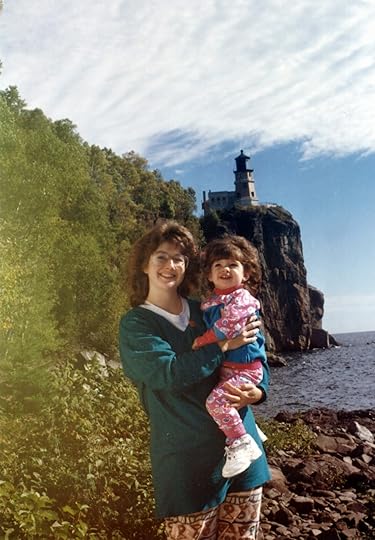

As I wrote Water Can Be..., those general feelings crystallized into a series of touchstones from my life. The world couldn’t survive without water, of course. But really, what I was thinking about was that I would be a different person without my water memories.
I watched a documentary recently about Arctic exploration in which explorer and photographer Sebastian Copeland said, "[P]hotography has been my weapon. With images, my mission would be to help people fall in love with their world, because I feel we will not save what we do not love." I love that. We have global water problems that cost children’s lives every day, and my book isn't going to solve them. But if it makes other people fall in love a little bit, well, that’s a first step. And that would make me a very happy writer.

Laura Purdie Salas is the author of more than 120 books for kids and teens, including WATER CAN BE..., A LEAF CAN BE... (Bank Street Best Books, IRA Teachers' Choice, Minnesota Book Award Finalist, Riverby Award for Nature Books for Young Readers, and more), and BOOKSPEAK! POEMS ABOUT BOOKS (Minnesota Book Award, NCTE Notable, Bank Street Best Book, Eureka! Gold Medal, and more). She loves to introduce kids to poetry and help them find poems they can relate to, no matter what their age, mood, and personality. She has also written numerous nonfiction books. See more about Laura and her work here.

 Laura Purdie SalasI know some writers set out to write books that change the world. I never hold aspirations quite that grand, but my books usually at least change me in some way.
Laura Purdie SalasI know some writers set out to write books that change the world. I never hold aspirations quite that grand, but my books usually at least change me in some way.Water Can Be...started as A River Can Be.... That's what I submitted to Millbrook Editorial Director Carol Hinz, who edited A Leaf Can Be . . . I loved how Leaf had turned out, and I thought, "Cool! Let's do that again!" So, I wrote A River Can Be..., and I liked it. I mean, rivers are cool. They do everything: carve out canyons, produce electricity, form borders, and--well, like a Swiss Army Knife, a good river can do just about anything. What's not to love?
But Carol declined the manuscript, pointing out that it lacked the universality of A Leaf Can Be. . ., because not all kids have access to a river. That threw me. I've lived my life in Florida and Minnesota, two states where a river is almost always within splashing distance.
 Laura head over heels at the go ahead to rewrite A River Can BeSo I proposed broadening the scope to all kinds of water, not just rivers. She said yes, and I got to work. As I brainstormed, a million memories surfaced:
Laura head over heels at the go ahead to rewrite A River Can BeSo I proposed broadening the scope to all kinds of water, not just rivers. She said yes, and I got to work. As I brainstormed, a million memories surfaced:· Me, age 4, riding a Colorado ski lift with my dad. At the top, he stood and skied off. I didn't. They had to circle the chair around, and I faced down an enormous snow-covered mountain. Ack!

· Swimming in Blue Spring in Florida, watching manatees play where the spring water joins the warm, alligator- and boat-filled St. Johns River.
· Diving off the high dive at the Langford Pool for the first time.
· Canoeing on Lake Sylvan, two blocks from my childhood home, keeping eyes peeled for alligators. (Shudder.)

· Ice skating (in Florida!) on my first date with my husband, Randy.
· Cross-country skiing at night through the woods, while owls called in the trees overhead.
· Watching a November storm whip Lake Superior into a frenzy, waves sloshing high over the sides of the Duluth Canal.

· Canyoning in Scotland on our 20th-anniversary honeymoon (finally!), sliding down waterfalls in a wetsuit so compressed I thought I would pop.
So many memories. I have always loved and respected water.


As I wrote Water Can Be..., those general feelings crystallized into a series of touchstones from my life. The world couldn’t survive without water, of course. But really, what I was thinking about was that I would be a different person without my water memories.
I watched a documentary recently about Arctic exploration in which explorer and photographer Sebastian Copeland said, "[P]hotography has been my weapon. With images, my mission would be to help people fall in love with their world, because I feel we will not save what we do not love." I love that. We have global water problems that cost children’s lives every day, and my book isn't going to solve them. But if it makes other people fall in love a little bit, well, that’s a first step. And that would make me a very happy writer.

Laura Purdie Salas is the author of more than 120 books for kids and teens, including WATER CAN BE..., A LEAF CAN BE... (Bank Street Best Books, IRA Teachers' Choice, Minnesota Book Award Finalist, Riverby Award for Nature Books for Young Readers, and more), and BOOKSPEAK! POEMS ABOUT BOOKS (Minnesota Book Award, NCTE Notable, Bank Street Best Book, Eureka! Gold Medal, and more). She loves to introduce kids to poetry and help them find poems they can relate to, no matter what their age, mood, and personality. She has also written numerous nonfiction books. See more about Laura and her work here.

Published on March 21, 2014 05:30
March 20, 2014
From the Office of the Future of Reading
Please join me in welcoming today's guest blogger, Suzanne Gibbs. Suzanne is a fourth grade teacher at Warner Elementary in Spring Arbor, Michigan. She has a wonderful, supportive husband who is also a teacher, two beautiful daughters, and the sweetest dog ever. She loves music, theater, sewing, and reading. You can find her on Twitter and on her blog.
[image error]
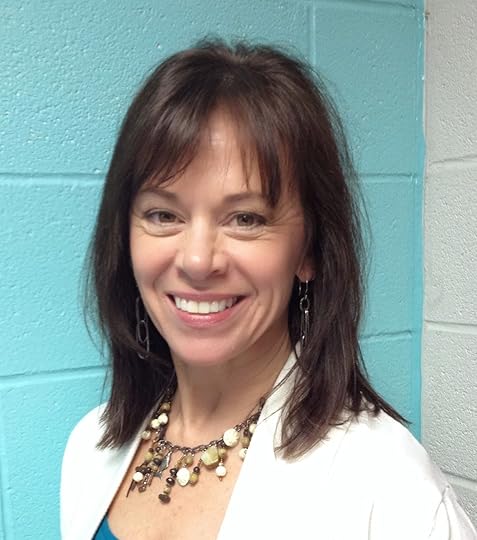 Suzanne Gibbs
Suzanne GibbsAfter teaching with a basal series for several years both in first and fifth grades, I came upon The Book Whisperer, by Donalyn Miller. To declare that it completely changed my approach to teaching reading (and writing) as well as my personal reading life would not be an overstatement. If you’re a teacher, you know a typical basal series has all kids reading the same story and is accompanied by specific vocabulary, spelling, and grammar assignments. Some of the stories are okay, but most of the time about half of the kids in class have no interest in the story whatsoever. For them, it’s just another story to grind their way through and more worksheets to complete. I made the decision that since there is so much research to back up choice reading and the positive effects it has on kids’ learning, it was a strategy worth diving into. I had spoken with several other teachers who had embraced this philosophy and they all raved about its success.
Realizing that my classroom was shamefully thin on great books, I wrote grants, shopped garage sales and Goodwill, asked for donations, and (thankfully) was given a generous cash donation from two local businessmen. I read and read and read some more. My former reading life consisted of practically all non-fiction, and I found these “new” books to be an absolute joy! By the time school began, my shelves were stocked with great books and I was ready to introduce my kiddos to wonderful characters created by incredible authors.
To be completely honest, the beginning of the school year felt more than a little chaotic. We had a “book frenzy” on the very first day, with students giddily making their initial book choices. It was exhilarating. It was also about the scariest thing I’ve done in my teaching career! Noise filled the room. I felt out of control. It was really a challenge to be okay with that.
Although it took a lot of work, we - my kids and I - read our way through books we adored and gave ourselves permission to abandon books we did not like. With these books came deeper understanding about characters and settings and themes and problems and genres. And each other. The kids discussed books with each other, declaring, with conviction and passion, why theirs was so wonderful. They were proud of themselves when another classmate chose to read something they had recommended. Authors became celebrities and important people to know about. Some of the most exciting days in our classroom were those that included a Skype or personal visit with one of the beloved writers.
The journey took patience. It took risk and some failures. At times it was frustrating. It was definitely hard. But by the time our year ended, twenty eight very important people had been given permission to be in charge of their own reading lives and, as a result, had fallen in love with reading. They had been able to share that love on our school’s morning announcements, with their friends and families, on their own blogs, on Skype sessions, in letters to me, on Prezis, and even by making their own book trailers.
If you have made the leap to letting your students have choice in their reading, you are to be applauded. The only thing I regret about this decision is that I didn’t make it years ago. I am so thankful for Donalyn’s insightful and practical book, and for the amazing people in our world who open our minds to endless possibilities through the stories they tell.
Thank you Suzanne for sharing your journey with us; what a great success! Your experience (and that of other teachers who have embraced student reading choice) reminds me of the wise words of uber librarian, Nancy Pearl, who has said: "There are 50 books everyone should read but they aren't the same 50 books for everyone."
Published on March 20, 2014 05:30
March 19, 2014
Wednesday Wisdom
Planning to write is not writing. Outlining. . researching. . talking to people about what you're doing, none of that is writing. Writing is writing.
E.L. Doctrow
E.L. Doctrow
Published on March 19, 2014 05:30
March 18, 2014
From the Office of the Future of Reading
Please help me welcome today's guest blogger Gigi McAllister. Gigi is a fourth grade teacher in Gorham, Maine. She was a reading “late bloomer” and is passionate about creating lifelong readers. You can visit Gigi at The Late Bloomer’s Book Blog, on Facebook and Twitter.
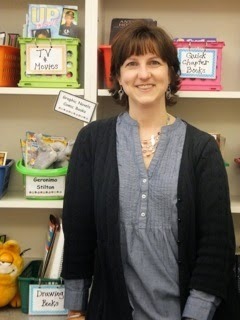
If someone asked me about my teaching “philosophy” 20 years ago I would have rattled off some version of how every child should be valued for their unique gifts and everyone can learn. Of course I still believe these things to be true. However, if asked today, I would say good teaching comes down to strong relationships and connections.
Building relationships with my students is THE most important thing I do. I listen to their stories and share parts of my life with them. They trust me and know I care deeply for each of them. Because of these relationships, I am far better able to connect them with books they will love.
Take Steve. He loves sports. He has a tendency to rush through things in school and can sometimes get “in trouble” on the playground. He is intimidated by longer books and has a tendency to jump from book to book without finishing. Because of what I know about Steve, I was able to steer him toward graphic novels about sports and short sports biographies. He read a book about Roberto Clemente and came to school each day eager to share something new he learned about the ballplayer with me.
Then there is Donna. She is what some might call a “Tomboy”. She does not fit the typical girly mold. Almost all of her friends are boys, but she doesn’t have a best buddy. She loves books by Kate DiCamillo and has read Because of Winn Dixie several times. She seems to identify with female characters who also don’t seem to fit society’s norms. Because of this I was able to recommend books like This Journal Belongs to Ratchet and Hattie Big Sky both of which she loved.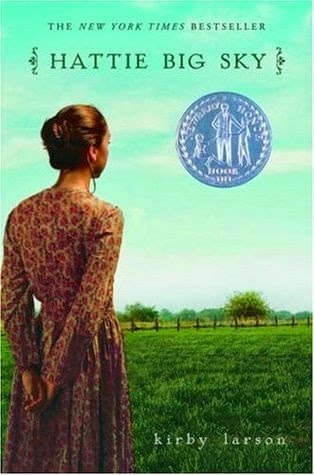
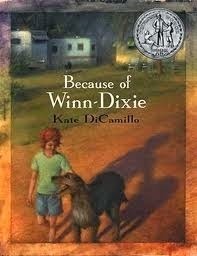

Finally, we have Cam. He is an extremely bright boy who loves math and being competitive. He is a bit of a “class clown” and always wants to be two steps ahead of me. He sometimes seems torn between being cool and being smart and has yet to discover that the two traits can exist harmoniously together in one person. Although reading comes very easily to him, he was content to read short, funny books for most of the first half of the year. Although he enjoyed them well enough, he didn’t really love them and they didn’t get him excited about reading. I knew Cam would love the Harry Potter series, but he was reluctant to give them a try. He loves a challenge so I challenged him to read just one chapter. He was fully prepared to prove me wrong, but he agreed to read the first chapter of the first book. That was over a month ago and now he is on the fourth book.
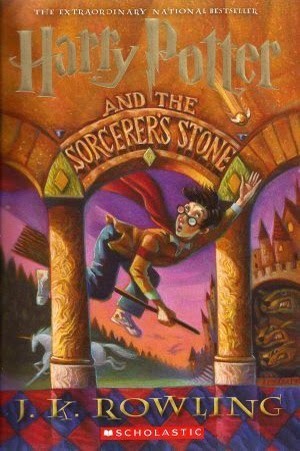
Investing time in getting to know my students as people is essential to a successful year together. I cherish these relationships that, in some cases, last long after they leave me.
Thank you Gigi for sharing how getting to know your students can give an important boost when connecting students to books. And tell Steve that my husband and I drove the backwards down a one way street (long story) so we could see the Roberto Clemente memorial in Puerto Rico. A special memory of ours of a special man.

If someone asked me about my teaching “philosophy” 20 years ago I would have rattled off some version of how every child should be valued for their unique gifts and everyone can learn. Of course I still believe these things to be true. However, if asked today, I would say good teaching comes down to strong relationships and connections.
Building relationships with my students is THE most important thing I do. I listen to their stories and share parts of my life with them. They trust me and know I care deeply for each of them. Because of these relationships, I am far better able to connect them with books they will love.
Take Steve. He loves sports. He has a tendency to rush through things in school and can sometimes get “in trouble” on the playground. He is intimidated by longer books and has a tendency to jump from book to book without finishing. Because of what I know about Steve, I was able to steer him toward graphic novels about sports and short sports biographies. He read a book about Roberto Clemente and came to school each day eager to share something new he learned about the ballplayer with me.
Then there is Donna. She is what some might call a “Tomboy”. She does not fit the typical girly mold. Almost all of her friends are boys, but she doesn’t have a best buddy. She loves books by Kate DiCamillo and has read Because of Winn Dixie several times. She seems to identify with female characters who also don’t seem to fit society’s norms. Because of this I was able to recommend books like This Journal Belongs to Ratchet and Hattie Big Sky both of which she loved.



Finally, we have Cam. He is an extremely bright boy who loves math and being competitive. He is a bit of a “class clown” and always wants to be two steps ahead of me. He sometimes seems torn between being cool and being smart and has yet to discover that the two traits can exist harmoniously together in one person. Although reading comes very easily to him, he was content to read short, funny books for most of the first half of the year. Although he enjoyed them well enough, he didn’t really love them and they didn’t get him excited about reading. I knew Cam would love the Harry Potter series, but he was reluctant to give them a try. He loves a challenge so I challenged him to read just one chapter. He was fully prepared to prove me wrong, but he agreed to read the first chapter of the first book. That was over a month ago and now he is on the fourth book.

Investing time in getting to know my students as people is essential to a successful year together. I cherish these relationships that, in some cases, last long after they leave me.
Thank you Gigi for sharing how getting to know your students can give an important boost when connecting students to books. And tell Steve that my husband and I drove the backwards down a one way street (long story) so we could see the Roberto Clemente memorial in Puerto Rico. A special memory of ours of a special man.
Published on March 18, 2014 05:30
March 17, 2014
Monday Musings
One more kick in the rear from my man, Ray Bradbury, from his amazing Zen in the Art of Writing:
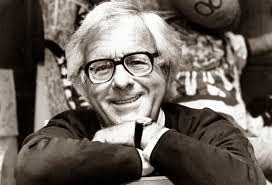
"Remember: Plot is no more than footprints left in the snow after your characters have run by one their way to incredible destinations. Plot is observed after the fact rather than before. It cannot precede action. It is the chart that remains when an action is through. That is all Plot ever should be. It is human desire let run, running, and reaching a goal. It cannot be mechanical. It can only be dynamic."

"Remember: Plot is no more than footprints left in the snow after your characters have run by one their way to incredible destinations. Plot is observed after the fact rather than before. It cannot precede action. It is the chart that remains when an action is through. That is all Plot ever should be. It is human desire let run, running, and reaching a goal. It cannot be mechanical. It can only be dynamic."
Published on March 17, 2014 05:30
March 14, 2014
Friend Friday
This is a first for this blog: a guest blogger appearing on both Friend Friday AND From the Office of the Future of Reading. Today, Sashi Kaufman wears her writer's hat. Later in the month, she'll share her insights while attired in her teacher chapeau. Double dipping! I love it.
Sashi is an English and science teacher who lives in Westbrook, Maine with her husband and daughter. The Other Way Around is her first YA novel. She believes ice cream is a vitamin and is also an amateur trash picker.
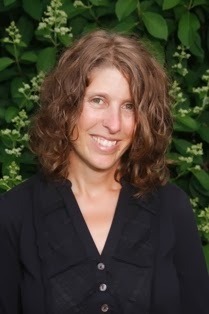 Sashi Kaufman
Sashi Kaufman
A little bit about how I found The Other Way Around. First of all, this was not my book’s original title. Originally I called the book Go West –which I thought was a very clever play on the road trip element and my main character’s name; Andrew West. Then, because the book was about a sixteen year old boy who runs away with a group of dumpster-diving, street-performing anarchists, the book was called The Freegans. But neither of those sat quite right with my editor –the super amazing Andrew Karre. At the time I was bummed out. I liked both of the titles my agent and I had come up with and none of his suggestions were working for me. I feared I was going to have a book with a title I was unhappy with. My editor left it up to me to find something we could agree on. I went back into the book and at the end of one chapter found this line. “I feel closer to the world in a good way, on the inside looking out instead of the other way around.” Andrew is the consummate observer. He watches but rarely makes an emotional commitment to others or even himself. This sentence was part of his reflection after an intense conversation with a girl he’s realizing he cares about. So the title worked on an emotional level and it also worked on a physical level.
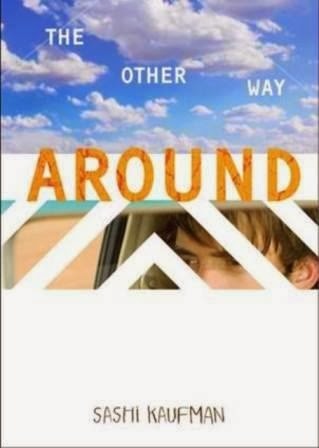
The book is a road trip which takes the characters on a roundabout journey across the Southern U.S. The title is also about the journey of growing up and discovering what kind of an adult you’re going to be. I teach eighth grade and so I see my students at the beginning of this journey as they’re just starting to think about themselves as adults or potential adults. Middle school can be kind of a sheltered insular time in life no matter where you live –but particularly so if you live in a smallish town in Maine. I try as much as possible to impart to my students that there are as many ways to be an adult as there are adults. But as their teacher, I know they tune out a lot of what I say –waiting for the lines, “And the homework for tonight is….” But they always listen to stories. Never is my class more captivated then when I change the tone of my voice to something slightly more informal and tell them some weird semi-related anecdote about my life. I don’t do it often –I swear I’m not one of those over-sharing teachers who make me cringe. The point is not about me. It’s about a story. When I wrote The Other Way Around I wanted to tell a story about a teenager taken far out of his comfort zone and away from what was familiar. I wanted him to be skeptical but curious. And I wanted that character to draw kids in the way I might imagine it would draw my students in –feeling safe, cautious but also curious. Stories have an incredible power to show us other ways to be and think and to ultimately decide in what ways we might incorporate new ideas into our own narratives – to help us find our own way around.
Sashi, I'm so intrigued. I know I'm not the only one that's going to run right out and get your book. . .which just came out on March 1! I'm also going to follow you on twitter, too. Thank you for this reminder of the power of story.
Published on March 14, 2014 05:30
March 13, 2014
From the Office of the Future of Reading
Please help me welcome today's guest blogger Angie
Oliverson
. Angie is known to her students as Ms. O. She started out as a HS Spanish teacher but has been an ES teacher librarian for about ten years. Find her blogging about books/tech/craft/geek stuff at MsOReadsBooks and on Twitter or Goodreads.
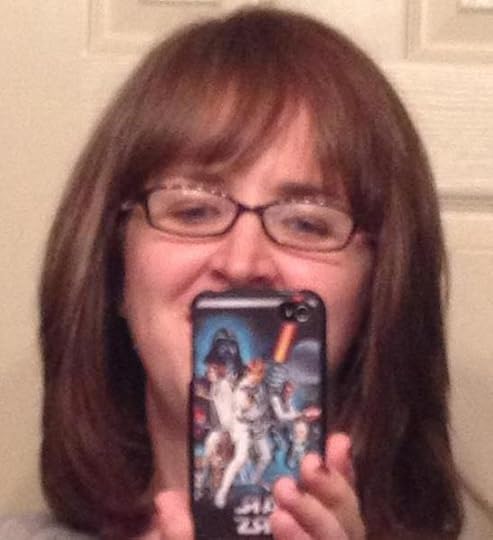
Everything I Needed to Know About Encouraging Library Users I Learned from Star Wars
Use the Library, Students. And Staff. And Parents. Use the Library.
In my head that’s Alec Guiness’ voice reminding us. Maybe not for you. But with my apologies to George Lucas and his team of screenwriters ... here are 10 ways Star Wars helps me remember to encourage library users.
1. “Come here, my little friend. Don’t be afraid.” Make your space welcoming. Face out as many books as will fit on your shelves. Display student work. Open up shelving and table arrangements so everyone can breathe! You don’t want anyone thinking “Who’s scruffy lookin’?” when they walk into the library space. Even if your school is 50 years old like mine.
2. “R2D2, where are you?” Get out and about the building! We all could very easily spend all day and then some in the physical library. Yes, this is much more doable if you have at least a part time assistant. Book posters in the restrooms. Two minute booktalks catching students and teachers (on their way BACK, of course) in the hallways. Drop-in visits to classrooms and the lounge and PTA gatherings. If you have a circ system with a mobile app so much the better. Go for a walk with five books in your hand and don’t come back until they’re in user hands.
3. “Perhaps she would respond to an alternative form of persuasion.” If at first you don’t succeed, try, try (“DO”) again. Promotion. You’ll never catch everyone with the same tactics so shake it up every couple of months. Talk up mysteries now and realistic fiction later. Simple reading for minutes and enjoyment one time and more in depth discussion and analysis the next. Choose maybe two social media outlets a semester to reach out to adult users. A library FB fanpage and Pinterest the first semester. Then maybe Vine or Instagram the next.
4. “This is some rescue! You came in here, but didn't you have a plan for getting out?” Be intentional and have a plan for the end of the year at the beginning. Break that down into monthly or semester goals. Four new displays. Eight new booktalk visits. Three new inquiry projects. Increase circulation by 5%. Two new topical booklists for teachers. A new brochure for parents. Otherwise June arrives and “OOPS! I never got to that” happens.
5. “You know, sometimes I amaze even myself.” You don’t have to know everything but do have a couple snazzy tools up your sleeve to amaze users. Maybe it’s a Symbaloo collection of book trailers. Maybe it’s creating a couple “auras” or QR codes connected to library titles or trigger images. Maybe it’s a series of short photos or videos featuring classes reading (kids LOVE to see themselves on camera … just be sure to follow privacy guidelines for your school).
6. “‘Who is this? What’s your operating number?’ ‘Boring conversation anyway.” Sometimes I’m appalled at how unfamiliar even the most awesome adults are with basic library organization. So for users of all ages … large and strategic SIGNAGE. Shelf signs. Signs hanging from the ceiling. Signs on the walls (if you’re lucky enough to have them). Signs next to the computers and search stations. If they’re bored (or confused) looking for what they want? They’ll leave.
7. “Well, he seems very friendly.” This one’s important enough that it’s on here twice. Even on the days when you feel tired and grumpy and stressed out for whatever reasons … want to keep users coming back? SMILE. Make sure users “know that laugh” … your laugh. It will only help.
8. “That face you make ... look I so old to young eyes?” Weeding. It is hard to make time for it. Hard, hard, hard. I used to think I was keeping up fairly well … but new perspective this year have shown me there is more to do! Books that look much loved to our eyes look old and yucky to students. “Scruffy lookin’” will not distract them from the TV or video games. And then you have to consider the inside … the topics. Are they still relevant? WEED.
9. “Many Bothans died to bring us this information.” This is the age of information overload! Some library users are intimidated by that rush of data. Break it down. Share bookmarks with search strategies or webpage evaluation tips or “if you liked this book try these” lists. Flip a few introductory database searches into short screencast videos and share them on the library webpage.
10. “You must unlearn what you have learned.” Someday we won’t constantly have to remind people that old ideas about libraries are just that … old. That we haven’t been only shushing and stamping books for years. That time is not yet. So here’s another one that’s on here twice. All those promotion ideas? Keep at ‘em. Change every once in a while to reach new users but Keep Them Up.
Don’t ever have to “pay the price for your lack of vision!” Get people using the library!
Thank you Angie for sharing such wonderful advice on getting students into the library! Clearly, the Force is with you.

Everything I Needed to Know About Encouraging Library Users I Learned from Star Wars
Use the Library, Students. And Staff. And Parents. Use the Library.
In my head that’s Alec Guiness’ voice reminding us. Maybe not for you. But with my apologies to George Lucas and his team of screenwriters ... here are 10 ways Star Wars helps me remember to encourage library users.
1. “Come here, my little friend. Don’t be afraid.” Make your space welcoming. Face out as many books as will fit on your shelves. Display student work. Open up shelving and table arrangements so everyone can breathe! You don’t want anyone thinking “Who’s scruffy lookin’?” when they walk into the library space. Even if your school is 50 years old like mine.
2. “R2D2, where are you?” Get out and about the building! We all could very easily spend all day and then some in the physical library. Yes, this is much more doable if you have at least a part time assistant. Book posters in the restrooms. Two minute booktalks catching students and teachers (on their way BACK, of course) in the hallways. Drop-in visits to classrooms and the lounge and PTA gatherings. If you have a circ system with a mobile app so much the better. Go for a walk with five books in your hand and don’t come back until they’re in user hands.
3. “Perhaps she would respond to an alternative form of persuasion.” If at first you don’t succeed, try, try (“DO”) again. Promotion. You’ll never catch everyone with the same tactics so shake it up every couple of months. Talk up mysteries now and realistic fiction later. Simple reading for minutes and enjoyment one time and more in depth discussion and analysis the next. Choose maybe two social media outlets a semester to reach out to adult users. A library FB fanpage and Pinterest the first semester. Then maybe Vine or Instagram the next.
4. “This is some rescue! You came in here, but didn't you have a plan for getting out?” Be intentional and have a plan for the end of the year at the beginning. Break that down into monthly or semester goals. Four new displays. Eight new booktalk visits. Three new inquiry projects. Increase circulation by 5%. Two new topical booklists for teachers. A new brochure for parents. Otherwise June arrives and “OOPS! I never got to that” happens.
5. “You know, sometimes I amaze even myself.” You don’t have to know everything but do have a couple snazzy tools up your sleeve to amaze users. Maybe it’s a Symbaloo collection of book trailers. Maybe it’s creating a couple “auras” or QR codes connected to library titles or trigger images. Maybe it’s a series of short photos or videos featuring classes reading (kids LOVE to see themselves on camera … just be sure to follow privacy guidelines for your school).
6. “‘Who is this? What’s your operating number?’ ‘Boring conversation anyway.” Sometimes I’m appalled at how unfamiliar even the most awesome adults are with basic library organization. So for users of all ages … large and strategic SIGNAGE. Shelf signs. Signs hanging from the ceiling. Signs on the walls (if you’re lucky enough to have them). Signs next to the computers and search stations. If they’re bored (or confused) looking for what they want? They’ll leave.
7. “Well, he seems very friendly.” This one’s important enough that it’s on here twice. Even on the days when you feel tired and grumpy and stressed out for whatever reasons … want to keep users coming back? SMILE. Make sure users “know that laugh” … your laugh. It will only help.
8. “That face you make ... look I so old to young eyes?” Weeding. It is hard to make time for it. Hard, hard, hard. I used to think I was keeping up fairly well … but new perspective this year have shown me there is more to do! Books that look much loved to our eyes look old and yucky to students. “Scruffy lookin’” will not distract them from the TV or video games. And then you have to consider the inside … the topics. Are they still relevant? WEED.
9. “Many Bothans died to bring us this information.” This is the age of information overload! Some library users are intimidated by that rush of data. Break it down. Share bookmarks with search strategies or webpage evaluation tips or “if you liked this book try these” lists. Flip a few introductory database searches into short screencast videos and share them on the library webpage.
10. “You must unlearn what you have learned.” Someday we won’t constantly have to remind people that old ideas about libraries are just that … old. That we haven’t been only shushing and stamping books for years. That time is not yet. So here’s another one that’s on here twice. All those promotion ideas? Keep at ‘em. Change every once in a while to reach new users but Keep Them Up.
Don’t ever have to “pay the price for your lack of vision!” Get people using the library!
Thank you Angie for sharing such wonderful advice on getting students into the library! Clearly, the Force is with you.
Published on March 13, 2014 05:30



